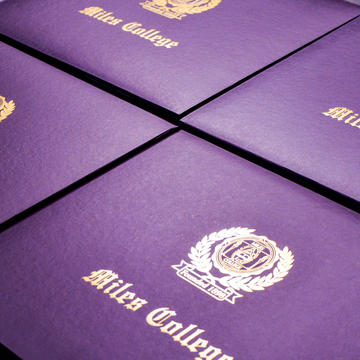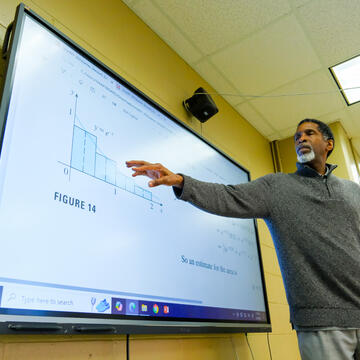
Council for the Accreditation of Educator Preparation (CAEP)

Annual Reports
This data is analyzed to assess the effectiveness of the program. The insights gained from this analysis inform the creation of actionable goals aimed at continuous improvement. The documents and links below represent the School’s annual review of the EPP's impact.

Certification Program Areas
Early Childhood Education P-3
Elementary Education K-6
Secondary Education Biology/Biology Education 6-12
Secondary Education Biology/General Science 6-12
Secondary Education Chemistry/Chemistry Education 6-12
Secondary Education English/English Language Arts 6-12
Secondary Education History/General Social Science 6-12
Secondary Education Mathematics/Mathematics Education 6-12
Music Education (Instrumental P-12)
Music Education (Choral P-12)
Measure 1: Completer Impact and Effectiveness
Completer Impact in Contributing to P-12 Student-Learning Growth
Completer Effectiveness in Applying Professional Knowledge, Skills, and Dispositions
To assess the effectiveness of our programs, eight observations and evaluations of teacher interns are documented by the Field Director and Chair of the Department. We also ask cooperating teachers in partner districts to evaluate our students to provide another lens on the interns’ practice. Evaluators are asked to discuss or send feedback to the intern and the supervisor.
Qualitative results from the intern observations have indicated that of the 96 observations in 2-2024-2025, there were several themes that emerged. These themes were discussed with faculty in the Division of Education and were used for program improvement. The themes that emerged from the observations include the following points: Lack of preparation for lesson planning and implementation in the classroom, lack of knowledge of resources to enhance lesson planning and better engage students, punctuality, and linking assessments with thinking/learning, rather than memorization.
Miles College has ordered the CPAST evaluation from The Ohio State University to use beginning in fall 2025. Training on the CPAST will occur in June 2025.
Miles College Division of Education began with the INTASC Dispositions survey in fall, 2024. Factor analysis was utilized to create and design an aggregate measure, categorizing 25 selected indicators into the Teacher Candidate Disposition Assessment (TCDA). An assessment of dispositions on teacher candidates begins in two courses prior to the internship, ED 209 and ED 319. Additionally, teacher candidates are assessed in the internship at the end of each 8-week placement, using numerical indicators from the cooperating teacher, supervising teacher, and self-assessment. The numerical indicators are:
4 points-Exceed Expectations
3 points-Meets Expectations
2 points-Emerging
1 point-Developing
MEASURE 2: Satisfaction of Employers and Stakeholder Involvement (Initial)
ALACTE Survey: The Alabama Association of Colleges for Teacher Education (ALACTE) members developed a survey to be disseminated to employers of first-year and second-year teachers who graduated from Miles College and received certification from the Alabama State Department of Education (ALSDE). Employer data can be found in the annual report card on institutions, ranked by teacher leader, effective teachers, emerging teachers, or ineffective teachers. This information can be found on the ALSDE website at Higher Education Report Card - Miles
New Taskforce on completer survey (2025): The Chair of the Division of Education for Miles College served on a taskforce initiated by the Alabama Council for Higher Education (ACHE) and the Alabama Association of Colleges for Teacher Education (ALACTE) to update the current completer survey used previously. After regular meetings in Montgomery, the task force reviewed the current survey, deleting some questions and combining other questions to reduce the number of questions and to provide clarity for responses. The goal of this work was to develop a survey that will be more efficient for administrators to complete and submit, providing educator preparation programs with needed information and data for program improvement. The new survey will be implemented in AY 2025-2026.
Measure 3: Candidate Competency at Program Completion (Initial)
Candidate performance on certification and licensure expectations includes information on the Praxis, Foundations of Reading 190, and edTPA tests:
|
Certification Program |
# of students | Mean | Passing Score | Pass Rate |
|---|---|---|---|---|
| Early Childhood | 37 | |||
| Elem Ed. Lit w/math Task 4 | 44 | |||
|
Secondary 6-12 Biology/Biology Ed. |
37 | |||
| Sec. 6-12 Biology/Gen Science Ed. | 1 | 37 | 37 | 100% |
| Sec. 6-12 Chemistry/Chemistry Ed. | 37 | |||
| Sec. 6-12 English/English Lang Arts | 37 | |||
| Sec. 6-12 History/General Social Science | 37 | |||
|
Sec. 6-12 Mathematics/Math Ed. |
3 | 39 | 37 | 100% |
| P-12 Education Music Education (Instrumental) | 1 | 37 | 37 | 100% |
|
P-12 Education Music Education (Choral) |
37 |
Praxis Exam
*data not reported for fewer than five candidates
| Certification Program | # of students | Mean | Passing Score | Pass Rate |
|---|---|---|---|---|
| Early Childhood | ||||
| Elem Ed. Math #5903 | 157 | |||
| Elem Ed. Science #5904 | 152 | |||
| Elem Ed. Social St. #5905 | 141 | |||
|
Secondary 6-12 Biology/Biology Ed. #5235 |
150 | |||
| Sec. 6-12 Biology/Gen Science Ed. #5435 | 167 | |||
| Sec. 6-12 Chemistry/Chemistry Ed. #5245 | 150 | |||
| Sec. 6-12 English/English Lang Arts #5038 | 167 | |||
| Sec. 6-12 History/General Social Science #5081 | 155 | |||
|
Sec. 6-12 Mathematics/Math Ed.#5161 |
160 | |||
| P-12 Education Music Education (Instrumental) #5113 | 161 | |||
|
P-12 Education Music Education (Choral) #5113 |
161 |
Foundations of Reading
*data not reported for fewer than five candidates
| Certification Program | # of students | Mean | Passing Score | Pass Rate |
|---|---|---|---|---|
| Early Childhood (ECH) | 1 | 240 | 233 | 100% |
| Elem Ed. (ELM) | 2 | 240 | 233 | 100% |
Measure 4: Ability of Completers to be Hired in Education Positions for Which They Have Been Prepared (Initial)
During the 2023-2024 academic year, two candidates earned initial certification. We have identified the employment of both completers. Both completers are teaching in elementary schools in Alabama. The completers are working in the Birmingham City Schools and Tuscaloosa County Schools districts.